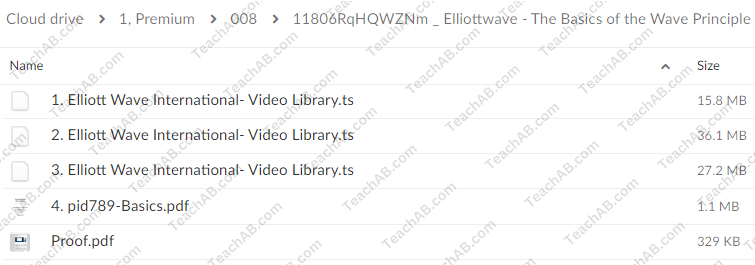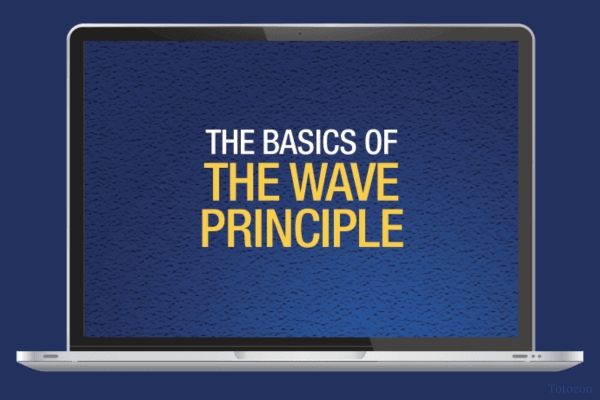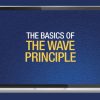The Basics of the Wave Principle with Wayne Gorman
$79.00 Original price was: $79.00.$15.00Current price is: $15.00.
You may check content proof of “The Basics of the Wave Principle with Wayne Gorman” below:

The Basics of the Wave Principle with Wayne Gorman
Introduction
Understanding market behavior is essential for successful trading, and one of the most effective tools for this is the Wave Principle. Wayne Gorman, a leading expert in Elliott Wave analysis, provides a comprehensive guide to mastering this technique. In this article, we will explore the fundamentals of the Wave Principle, its practical applications, and how Wayne Gorman’s insights can enhance your trading strategies.
Who is Wayne Gorman?
Background and Expertise
Wayne Gorman is a seasoned trader and educator with extensive experience in Elliott Wave analysis. As a senior instructor at Elliott Wave International, he has helped numerous traders understand and apply the Wave Principle in their trading.
Contributions to Trading
Gorman is renowned for his clear and practical approach to teaching the Wave Principle, making complex concepts accessible to traders at all levels. His workshops and educational materials are highly regarded in the trading community.
What is the Wave Principle?
Definition and Origins
- Elliott Wave Theory: Developed by Ralph Nelson Elliott in the 1930s, this theory posits that market prices move in predictable patterns or “waves.”
- Core Concept: The Wave Principle is based on the idea that investor psychology moves in natural cycles, which can be observed in market price movements.
Basic Structure
- Impulse Waves: These are five-wave patterns that move in the direction of the main trend.
- Corrective Waves: These are three-wave patterns that move against the main trend.
Key Components of the Wave Principle
Impulse Waves
Wave 1
- Initiation: Marks the beginning of a new trend.
- Characteristics: Often difficult to identify as it may seem like a continuation of the previous trend.
Wave 2
- Correction: Retraces a portion of Wave 1.
- Characteristics: Typically a sharp correction that does not move beyond the starting point of Wave 1.
Wave 3
- Strong Move: Usually the longest and most powerful wave.
- Characteristics: Attracts significant market participation, leading to substantial price movement.
Wave 4
- Consolidation: A corrective phase that retraces a portion of Wave 3.
- Characteristics: Often a complex pattern, preparing for the final wave of the impulse.
Wave 5
- Final Leg: Completes the impulse pattern.
- Characteristics: Can be driven by speculation and may show divergence with momentum indicators.
Corrective Waves
Zigzag
- Structure: A simple three-wave pattern (A-B-C).
- Characteristics: Typically sharp and straightforward corrections.
Flat
- Structure: A three-wave pattern where Wave B retraces close to or beyond the start of Wave A.
- Characteristics: Horizontal in nature, indicating a prolonged correction.
Triangle
- Structure: A five-wave pattern labeled A-B-C-D-E.
- Characteristics: Indicates a consolidation phase before the continuation of the trend.
Applying the Wave Principle in Trading
Identifying Waves
Technical Tools
- Charts and Indicators: Use of price charts and technical indicators to identify wave patterns.
- Software: Specialized software like Advanced GET can automate wave identification.
Pattern Recognition
- Visual Analysis: Developing the skill to visually recognize wave patterns on price charts.
- Checklists: Using checklists to confirm the presence of wave patterns.
Trading Strategies
Entry Points
- Wave 2 and Wave 4 Corrections: Ideal entry points are often found at the end of corrective waves.
- Wave 3 and Wave 5: Entering trades during these impulse waves can capture significant price movements.
Exit Points
- End of Wave 5: Exiting trades as the final impulse wave completes to avoid potential reversals.
- Targeting Waves: Setting profit targets based on wave projections.
Risk Management
Stop-Loss Orders
- Placement: Positioning stop-loss orders just beyond the starting point of the previous wave.
- Adjustment: Moving stop-loss orders as the wave progresses to lock in profits.
Position Sizing
- Calculations: Determining position size based on account size and risk tolerance.
- Adaptability: Adjusting position sizes according to the wave structure and market conditions.
Benefits of Using the Wave Principle
Predictive Power
The Wave Principle provides a framework for predicting market movements, allowing traders to anticipate future price action.
Enhanced Analysis
Combining Elliott Wave analysis with other technical tools enhances overall market analysis and decision-making.
Improved Discipline
Following the structured approach of the Wave Principle helps traders maintain discipline and avoid emotional trading decisions.
Wayne Gorman’s Teaching Approach
Educational Materials
Books and Articles
- Content: Comprehensive guides and detailed articles on Elliott Wave analysis.
- Accessibility: Available for traders of all levels to deepen their understanding.
Video Tutorials
- Visual Learning: Step-by-step video tutorials that break down complex concepts.
- Practical Examples: Real-world trading scenarios to illustrate wave patterns.
Interactive Workshops
Live Sessions
- Engagement: Interactive live sessions where traders can ask questions and get immediate feedback.
- Practical Insights: Hands-on experience with real-time market analysis.
Community Support
- Forums and Groups: Access to a community of like-minded traders for support and knowledge sharing.
- Mentorship: Opportunities for one-on-one mentoring with Wayne Gorman.
Conclusion
The Wave Principle is a powerful tool for understanding and predicting market movements. Wayne Gorman’s expertise and educational resources make mastering this technique accessible and practical. By integrating the Wave Principle into your trading strategy, you can enhance your market analysis, improve your decision-making, and achieve greater trading success.
Commonly Asked Questions:
- Business Model Innovation: Accept the truth of a legitimate business! Our strategy is organising a group buy in which participants share the costs. We use these cash to acquire popular courses from sale pages and make them available to people with limited financial resources. Despite the authors’ worries, our clients love the cost and accessibility we give.
- The Legal Environment: Yes or No The legality of our activity is ambiguous. While we don’t have specific permission from the course authors to resell the material, there is a technicality at work. The author did not specify any limits on resale when purchasing the course. This legal intricacy is both an opportunity for us and a boon for individuals looking for low-cost access.
- Quality Control: Uncovering the Truth
Getting to the heart of the issue – quality. Purchasing the course straight from the sale page guarantees that all documents and resources are the same as those obtained through traditional channels.
However, we distinguish ourselves by going beyond personal research and resale. It is crucial to note that we are not the official course providers, which means that the following premium services are not included in our package:
- There are no scheduled coaching calls or sessions with the author.
- Access to the author’s private Facebook group or web portal is not permitted.
- No access to the author’s private membership forum.
- There is no direct email support available from the author or their team.
We operate independently, with the goal of bridging the pricing gap without the extra services provided by official course channels. Your comprehension of our distinct approach is much appreciated.
Be the first to review “The Basics of the Wave Principle with Wayne Gorman” Cancel reply
You must be logged in to post a review.
Related products
Forex Trading
Forex Trading
Forex Trading
Forex Trading
Forex Trading
Forex Trading
Forex Trading
Forex Trading
Forex Trading
Forex Trading
Quantamentals – The Next Great Forefront Of Trading and Investing with Trading Markets
Forex Trading

 The Orderflows Trade Opportunities Encyclopedia with Michael Valtos
The Orderflows Trade Opportunities Encyclopedia with Michael Valtos 




















Reviews
There are no reviews yet.